Wondering What the Best Home Use Face Peelings For Face Are?
Table of Contents
In the quest for smooth and radiant skin, at-home face peels have emerged as a game-changing skincare solution. These transformative products offer an accessible and convenient way to achieve a brighter and more youthful complexion without the need for professional treatments. If you’ve ever wondered about the magic behind best home use peelings for face?, this chapter is your gateway to understanding their efficacy and benefits.
Unveiling the Magic: How At-Home Face Peels Work
At-home face peels are the secret weapon in your skincare arsenal, designed to uncover your skin’s natural radiance. Unlike traditional masks or creams, face peels harness the power of exfoliating acids to gently dissolve the outermost layer of your skin. This process reveals fresh, new skin underneath, effectively treating concerns such as acne, hyperpigmentation, fine lines, and uneven texture.
The Dermatologist’s Seal of Approval
Dermatologists around the world are championing the use of at-home face peels for their remarkable results. These experts emphasize that face peels are not only effective but also safe when used correctly. By promoting the shedding of dead skin cells and stimulating cellular turnover, at-home peels can address a wide range of skin issues, leaving you with a smoother and more youthful appearance.
Exploring the Science Behind Face Peels
The science behind at-home face peels is rooted in the action of exfoliating acids. These acids, such as alpha hydroxy acids (AHAs), beta hydroxy acids (BHAs), and fruit acids, work by breaking down the bonds between skin cells, allowing them to be gently lifted away. This process not only uncovers fresher skin but also encourages the production of collagen and elastin, two essential components for maintaining skin’s elasticity and firmness.
Embracing the Benefits of At-Home Face Peels
The benefits of incorporating at-home face peels into your skincare routine are manifold. Beyond the immediate glow and smoothness, regular use of face peels can lead to a reduction in the appearance of fine lines, improved skin texture, and a more even skin tone. Moreover, these peels pave the way for better absorption of other skincare products, maximizing their efficacy and ensuring you get the most out of your routine.
As we delve deeper into this comprehensive guide, you’ll discover the nuances of different face peel acids, the mechanisms behind their action, and the art of selecting the perfect at-home peel for your unique skin needs. Prepare to embark on a journey to a brighter, smoother, and more vibrant complexion—the power of at-home face peels awaits.
The Science Behind Best Home Use Peelings For Face
As we journey deeper into the realm of at-home face peels, it’s essential to grasp the scientific underpinnings that make these products so effective. At the heart of their transformative capabilities lies ameticulous balance of chemistry and biology, working in harmony to reveal your skin’s radiant potential.
Deciphering the Different Types of Face Peel Acids
The cornerstone of any effective at-home face peel is its active ingredient—the exfoliating acid. These acids, carefully chosen for their unique properties, play a pivotal role in shedding the dull and damaged outermost layer of your skin. Let’s explore some of the most common types:
Alpha Hydroxy Acids (AHAs)
AHAs, such as glycolic, lactic, and malic acids, are water-soluble acids that excel at dissolving dead skin cells and promoting cellular turnover. With their small molecular size, AHAs penetrate the skin’s surface effectively, leaving you with a smoother and more even complexion.
Beta Hydroxy Acids (BHAs)
BHAs, including salicylic and citric acids, are oil-soluble and particularly adept at penetrating pores. This makes them an excellent choice for individuals with acne-prone skin, as they help unclog pores and prevent breakouts.
Fruit Acids
Derived from fruits like apples, pumpkins, and pineapples, these natural sources of acid offer a gentler exfoliation. Fruit acids, often rich in antioxidants, not only remove dead skin cells but also infuse your skin with nourishing vitamins and minerals.
Unveiling the Mechanism: How Face Peels Work Their Magic
At-home face peels operate on a fascinating principle—dissolving the bonds between skin cells, allowing them to be effortlessly lifted away. As you apply the peel, the exfoliating acid gets to work, breaking down the connections that hold old skin cells together. This process, known as desquamation, reveals the fresh, healthy skin beneath.
But the magic doesn’t end there. Face peels also stimulate cell renewal. Ingredients like vitamin C and retinol, often found in these products, encourage the skin to generate new cells, further enhancing its texture, tone, and luminosity.
Elevating Results with Supporting Ingredients
While exfoliating acids take center stage, the supporting cast of ingredients in at-home peels contributes to their overall efficacy. These ingredients work synergistically to provide a well-rounded skincare experience:
Antioxidants
Powerhouse ingredients like vitamin C and green tea extract infuse yourskin with protective antioxidants. These elements not only shield your skin from environmental damage but also contribute to a brighter and more vibrant complexion.
Hydrators
Incorporating hydrating ingredients such as hyaluronic acid ensures that your skin remains moisturized throughout the peeling process. Hydration is key to preventing dryness and promoting the optimal healing of your skin.
Collagen-Boosting Agents
Ingredients like peptides and retinol play a pivotal role in boosting collagen production, leading to firmer and more youthful skin. By enhancing the skin’s natural support structure, these agents contribute to a plumper and more radiant appearance.
Understanding the science behind at-home face peels empowers you to make informed decisions when selecting the right product for your skin. As we delve further into this guide, you’ll learn how to leverage this knowledge to achieve optimal results, revealing the radiant skin you’ve always dreamed of.
Professional vs. At-Home Peels: Pros and Cons
In the quest for flawless and radiant skin, you’re often presented with two paths: the professional touch of a dermatologist or the convenience of at-home treatments. Each approach comes with its own set of advantages and considerations, catering to different preferences and skincare needs.
The Effectiveness of Professional Dermatologist Peels
Dermatologist-administered peels offer a level of precision and potency that can be challenging to replicate at home. These treatments are often tailored to your specific skin concerns and can address deeper-seated issues such as severe hyperpigmentation, stubborn acne scars, and more advanced signs of aging. Here’s a closer look at their benefits:
- Customization: Dermatologists have the expertise to customize the peel formulation to match your skin type, concerns, and goals, ensuring optimal results.
- Deeper Penetration: Professional peels can penetrate deeper layers of the skin, targeting stubborn imperfections that might require a more intensive approach.
- Clinical Supervision: Under the care of a dermatologist, potential adverse reactions can be managed promptly, minimizing risks.
Cost Comparison: Best Home Use Peels vs. Professional Treatments
When it comes to cost, there’s a notable contrast between professional peels and their at-home counterparts. Professional treatments often come with a higher price tag due to the specialized expertise and clinical setting. On the other hand, at-home peels offer a budget-friendly alternative that doesn’t compromise on results. Consider these points:
Professional Peels:
- Higher Initial Cost: Dermatologist appointments and clinic fees contribute to a more substantial upfront investment.
- Long-Term Expenses: Depending on your skin goals, multiple sessions might be required, increasing the overall expenditure.
- Expert Oversight: Professional treatments provide expert guidance, but require visits to the clinic, which may be less convenient for some.
At-Home Peels:
- Affordability: At-home peels are generally more cost-effective, with products available at various price points to suit your budget.
- Convenience: You have the flexibility to perform treatments on your schedule, saving time and travel to a clinic.
- Cumulative Effect: While individual at-home sessions might be gentler, consistent use over time can yield significant improvements.
Potential Side Effects and Downtime of Professional Peels
Professional peels, while highly effective, can entail some downtime and potential side effects due to their more potent formulations. These side effects may include redness, peeling, and temporary sensitivity. It’s important to consider your tolerance for these effects when opting for professional treatments.
The Appeal of At-Home Peels: Convenience and Gentler Approach
At-home peels offer a gentler introduction to the world of chemical exfoliation. They are designed to be user-friendly, making them accessible to a wider audience. The convenience factor cannot be overstated, as at-home treatments can be seamlessly integrated into your existing skincare routine. Here’s why many individuals opt for this approach:
- Gradual Improvement: At-home peels often provide more subtle results, making them suitable for those seeking gradual skin enhancement.
- No Downtime: Mild formulations result in minimal downtime and less noticeable side effects compared to professional treatments.
- Personalized Control: You have the power to adjust the frequency and intensity of at-home peels based on your skin’s response.
Deciding between professional and at-home peels ultimately depends on your skin goals, budget, and lifestyle. The key is to make an informed choice that aligns with your unique preferences. As we move forward in this guide, you’ll explore how to choose the right at-home peel that suits your individual needs, unlocking the path to your best skin yet.
Choosing the Best Home Use Face Peel
Selecting the ideal at-home face peel can be a transformative step in your skincare routine. With a wide array of options available, tailoring your choice to your specific skin concerns is key to achieving the radiant complexion you desire. This chapter delves into the essential factors to consider when choosing the perfect at-home face peel for your unique needs.
Assessing Your Skin: Sensitive, Rosacea, or Complexion Concerns
Before embarking on your at-home peel journey, it’s crucial to understand your skin type and the specific issues you wish to address. Consider the following categories to help guide your decision:
Sensitive Skin:
- Look for mild, soothing ingredients to minimize the risk of irritation.
- Opt for peels with lower acid concentrations to avoid overwhelming your skin.
- Conduct a patch test to ensure your skin can tolerate the product.
Rosacea-Prone Skin:
- Choose peels with calming agents like chamomile or green tea to soothe redness.
- Avoid highly acidic peels that may exacerbate inflammation.
- Consult with a dermatologist before introducing any new products.
Complexion Concerns:
- If you’re dealing with uneven skin tone or fine lines, peels with alpha hydroxy acids (AHAs) or beta hydroxy acids (BHAs) can be effective.
- For hyperpigmentation, look for peels containing glycolic acid or vitamin C.
- Acne-prone skin can benefit from salicylic acid-based peels to unclog pores and reduce breakouts.
Ingredients for Sensitive Skin: Soothing and Gentle Acids
Sensitive skin requires a delicate touch when it comes to exfoliation. Opt for at-home peels that feature gentle acids known for their calming properties:
Lactic Acid:
- Known for its mild exfoliating properties and hydrating effects.
- Suitable for sensitive skin due to its gentle nature.
Mandelic Acid:
- Larger molecular size means it penetrates more slowly, reducing irritation.
- Effective in addressing skin texture and tone without causing excess redness.
Frequency and Timing: Tailoring Your Peel to Your Schedule
The frequency of your at-home peels should align with your skin’s tolerance and your desired results. Here are some guidelines to help you determine the ideal schedule:
Mild Peels:
- Can be used more frequently, such as 2-3 times a week.
- Ideal for maintenance and subtle improvement.
Stronger Peels:
- Consider using them once a week to avoid over-exfoliation.
- Monitor your skin’s response and adjust as needed.
Maximizing Benefits: Reading Labels for Supporting Ingredients
When evaluating at-home peel products, it’s not just about the primary acids. Supporting ingredients can enhance the overall effectiveness of the peel. Look for products that contain:
- Hyaluronic Acid: Provides hydration to counteract any potential dryness from the peel.
- Antioxidants: Ingredients like vitamin C and E help protect your skin from environmental damage.
- Niacinamide: Supports a healthy skin barrier and can reduce inflammation.
By considering your skin’s unique needs, choosing the appropriate ingredients, adjusting the frequency of use, and looking for products with complementary additives, you can make an informed decision that brings you one step closer to achieving a radiant and revitalized complexion. With the right at-home face peel, you’ll unlock the power of professional-grade skincare in the comfort of your own home.
Top 15 At-Home Face Peels for a Radiant Complexion
Unveiling radiant and youthful skin is now within reach with the best at-home face peels that offer transformative results. This chapter presents a curated selection of the top 14 at-home face peels that have gained acclaim for their ability to rejuvenate and revitalize your complexion.
Natura Bissé Diamond Glyco Extreme Peel Advanced Complexion Rescue Exfoliates

- This peel was rated as the best at-home chemical peel for mature skin by Marie Claire in 2022. It features a combination of glycolic acid and other exfoliating agents that help to smooth fine lines and wrinkles.
Dr. Dennis Gross Skincare Alpha Beta Universal Daily Peel

A beloved favorite among skincare enthusiasts, this daily peel combines alpha and beta hydroxy acids for gentle yet effective exfoliation. Expect improved texture, minimized pores, and a brighter complexion with consistent use.
The Ordinary AHA 30% + BHA 2% Peeling Solution
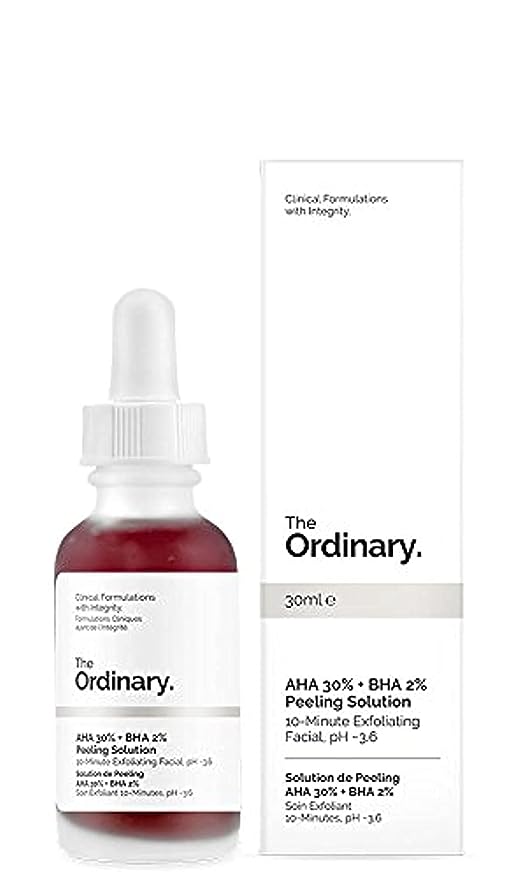
The iconic red mask by The Ordinary offers a potent blend of glycolic, lactic, and salicylic acids. This powerful exfoliating treatment tackles uneven tone, texture, and clogged pores, leaving you with a smoother and more radiant appearance.
Peter Thomas Roth FIRMx Exfoliating Peel Gel
Infused with pineapple, pomegranate, and keratinase enzymes, this gel peel delivers a gentle exfoliation experience. It effectively removes dead skin cells, revealing a fresher complexion and enhancing the absorption of other skincare products.
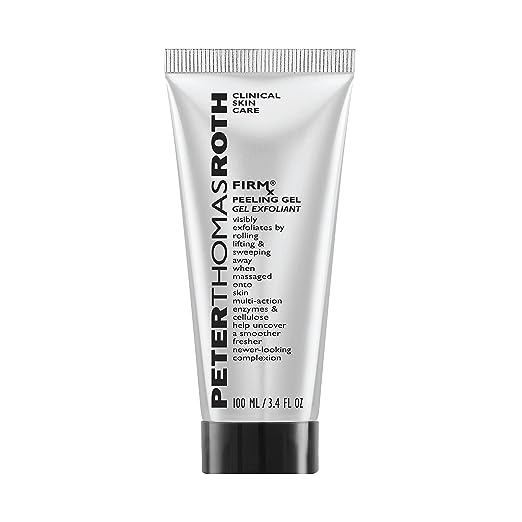
Drunk Elephant T.L.C. Sukari Babyfacial 25% AHA + 2% BHA Mask
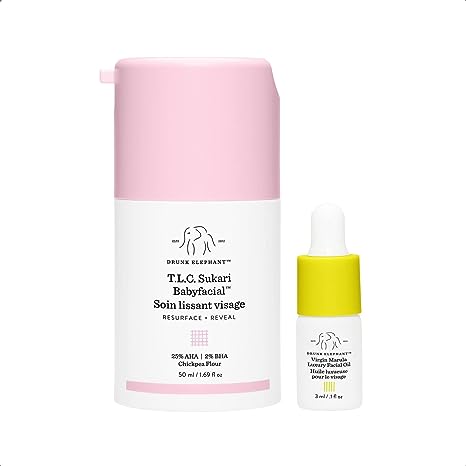
This “babyfacial” treatment is a blend of alpha and beta hydroxy acids that exfoliate the skin’s surface and unclog pores. It addresses fine lines, dullness, and uneven texture, leaving you with a smoother, more radiant appearance.
RoC Retinol Correxion Max Wrinkle Resurfacing System
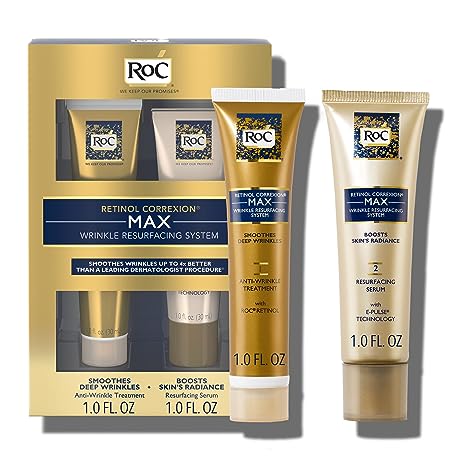
Combining a retinol treatment with a resurfacing serum, this dual-action system works to minimize the appearance of fine lines and wrinkles while exfoliating the skin for improved tone and texture.
Philosophy The Microdelivery Vitamin C Resurfacing Peel

Enriched with vitamin C and peptides, this peel encourages skin renewal and boosts collagen production. It addresses signs of aging and sun damage, revealing a brighter and more youthful complexion.
First Aid Beauty Facial Radiance AHA Intensive Peel

Formulated with lactic and glycolic acids, this intensive peel provides a deeper exfoliation experience. It helps refine skin texture, fade discoloration, and promote a smoother, more even complexion.
QRxLabs Glycolic Acid 20% Resurfacing Pads for Face & Body
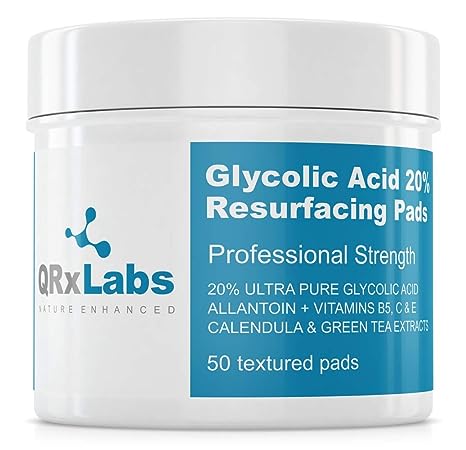
Combining alpha hydroxy acids and retinol, these exfoliating pads offer a multi-faceted approach to skin renewal. They help reduce the appearance of fine lines, pores, and uneven tone for a revitalized complexion.
Juice Beauty Green Apple Peel Full Strength
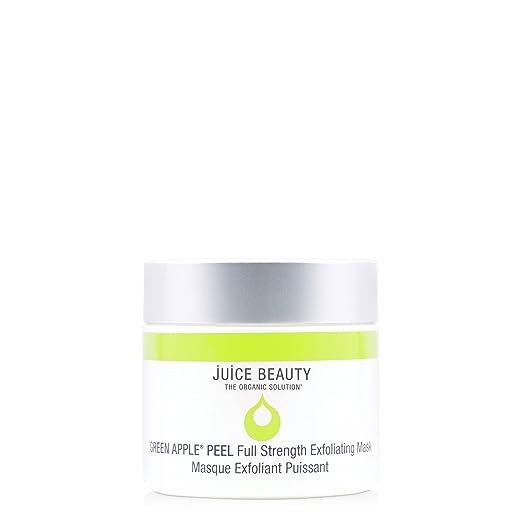
Crafted with organic fruit acids, this peel targets hyperpigmentation, uneven tone, and signs of aging. The potent blend of alpha and beta hydroxy acids works to reveal a brighter and more even complexion.
The INKEY List Apple Cider Vinegar Acid Peel

Harnessing the power of apple cider vinegar, this peel gently exfoliates the skin while balancing its pH levels. It’s an excellent option for those with sensitive skin seeking a milder exfoliation experience.
Dr Dennis Gross Alpha Beta Pore Perfecting Cleansing Gel
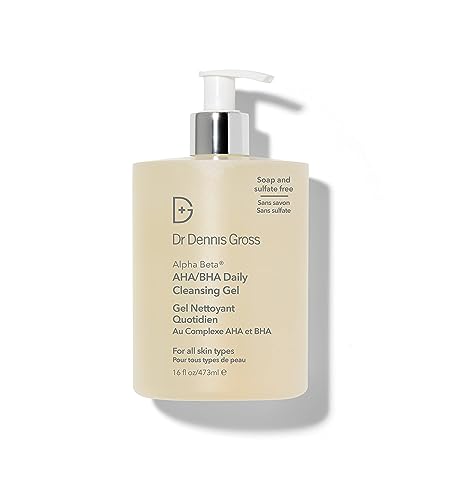
This liquid peel combines alpha and beta hydroxy acids with ferulic acid and niacinamide for a comprehensive exfoliating and brightening experience. It promotes smoother skin texture and improved radiance.
Eminence Yam and Pumpkin Enzyme Peel

Infused with yam and pumpkin enzymes, this peel offers a natural exfoliation process. It addresses dullness, uneven texture, and congestion, leaving your skin renewed and glowing.
Naturally Serious Get Even Cold-Pressed Peel Pads
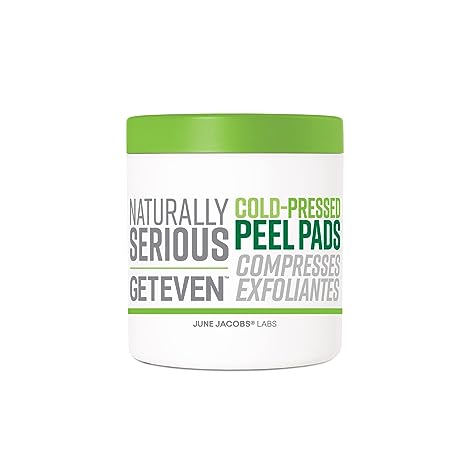
Packed with botanicals and alpha hydroxy acids, these cold-pressed peel pads exfoliate and brighten the skin. They help refine pores, enhance radiance, and promote a more even skin tone.
Kate Somerville Liquid ExfoliKate – Triple Acid Resurfacing Treatment

Shani Darden Triple Acid Signature Peel
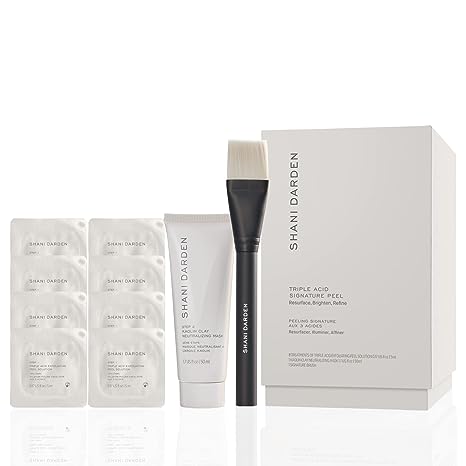
This peel was rated as the best at-home chemical peel for hyperpigmentation by Marie Claire in 2022. It features a combination of three acids (glycolic, salicylic, lactic) that provide strong exfoliation and skin-smoothing results.
Exploring Overnight Radiance: Swiping Away Dead Skin
Discover the transformative power of overnight peeling treatments that gently dissolve dead skin cells while you sleep. These innovative products work to reveal smoother and more radiant skin come morning.
These top 14 at-home face peels cater to a range of skin concerns, offering you the opportunity to choose the perfect solution for achieving a radiant and revitalized complexion from the comfort of your own home.
Achieving Optimal Results and Best Practices
Unlocking the full potential of at-home face peels requires not only the right products but also a strategic approach to application and aftercare. This chapter delves into the essential practices that ensure you achieve the best results from your peeling regimen.
Patience and Consistency: Timeframe for Seeing Visible Results
Understanding that achieving radiant skin takes time is essential. While some immediate improvements in skin texture and tone may be noticeable after a single use, optimal results often become evident with consistent and regular use over a span of weeks. To see the full benefits, it’s recommended to integrate at-home peels into your skincare routine and maintain a consistent application schedule.
Combining Peels with Other Skincare Products
At-home face peels can play a pivotal role in enhancing the overall efficacy of your skincare routine. They create a clean canvas by removing dead skin cells and promoting better absorption of subsequent skincare products. When integrating peels into your routine, consider layering them with complementary products such as hydrating serums, antioxidant-rich formulations, and moisturizers. However, avoid using multiple exfoliating products simultaneously to prevent over-exfoliation and potential irritation.
Post-Peel Care: Hydration, Sun Protection, and Nourishment
Following an at-home peel session, prioritizing post-peel care is vital to maintain the health and integrity of your skin. Here are key steps to consider:
Hydration:
Peels can temporarily compromise your skin barrier, leading to increased sensitivity. Immediately after a peel, opt for gentle, hydrating products to soothe and restore moisture balance. Hyaluronic acid-based serums and lightweight moisturizers are excellent choices.
Sun Protection:
Since freshly exfoliated skin is more vulnerable to UV damage, daily sun protection is non-negotiable. Apply a broad-spectrum SPF of at least 30 and consider wearing a wide-brimmed hat and sunglasses when spending time outdoors.
Nourishment:
Post-peel, focus on replenishing your skin with nourishing ingredients. Antioxidants like vitamin C can help protect your skin from free radicals, while peptides and ceramides aid in repair and regeneration.
Remember that a balanced approach to skincare involves both proactive and reactive measures. Be attentive to your skin’s response, adjusting your routine if you notice signs of irritationor dryness. The synergy between at-home face peels and thoughtful skincare practices can yield the radiant complexion you desire.
FAQs About Best Home Use Face Peels
Navigating the world of at-home face peels can bring up a range of questions and concerns. This chapter addresses some of the most frequently asked questions to help you make informed decisions and achieve your skincare goals.
Can I use a face peel if I have sensitive skin?
Absolutely. However, if you have sensitive skin, it’s crucial to choose a gentle peel that’s specifically formulated for your skin type. Look for peels that contain soothing and hydrating ingredients like chamomile, aloe vera, and hyaluronic acid. It’s also recommended to do a patch test before applying the peel to your entire face to ensure your skin can tolerate it without adverse reactions.
How often should I use an at-home face peel?
The frequency of using at-home face peels depends on the specific product you’re using and your skin’s tolerance. Generally, it’s recommended to start with once a week and gradually increase the frequency as your skin becomes accustomed to the treatment. However, always follow the instructions provided by the product manufacturer and consult with a dermatologist if you’re unsure.
Are there any specific ingredients I should avoid?
When selecting at-home face peels, it’s a good idea to avoid harsh and potentially irritating ingredients, especially if you have sensitive skin. Ingredients like high concentrations of alpha hydroxy acids (AHAs) or beta hydroxy acids (BHAs) may be too strong for some individuals. Additionally, if you have any known allergies, make sure to carefully review the ingredient list before using a new product.
Can face peels help with acne scars?
At-home face peels can contribute to improving the appearance of certain types of acne scars. The exfoliating action of peels can help remove dead skin cells and stimulate skin renewal, which may lead to a reduction in the visibility of minor scars over time. However, for more severe scarring, it’s best to consult with a dermatologist who can recommend more targeted treatments.
Is it normal for my skin to tingle during a peel?
Yes, a mild tingling sensation is quite common during and immediately after applying a face peel. This sensation is usually a result of the active ingredients in the peel working to exfoliate and renew the skin’s surface. However, if you experience intense burning, stinging, or discomfort, it’s important to rinse off the peel immediately and consult a healthcare professional.
By addressing these frequently asked questions, you’ll gain a better understanding of how to navigate the world of at-home face peels and tailor your skincare routine to your unique needs and goals.
Conclusion
As you conclude your journey through the realm of at-home face peels, it’s time to reflect on the valuable insights you’ve gained and the potential transformations your skin can experience. Throughout this comprehensive guide, you’ve delved into the intricate science behind face peels, explored the nuances between professional and at-home treatments, learned how to select the right peel for your unique skin concerns, and uncovered a curated selection of top-notch products.
Embracing the Power of At-Home Face Peels
At-home face peels have proven themselves as a potent tool in the realm of skincare, offering individuals the opportunity to achieve professional-level results in the comfort of their own homes. By harnessing the power of carefully formulated acids and supporting ingredients, you’ve discovered a pathway to smoother, brighter, and more radiant skin. The journey you’ve undertaken showcases your commitment to self-care and your dedication to achieving the best version of your complexion.
Unveiling Your Best Skin: Radiant Results Await
With a multitude of options at your disposal, you now possess the knowledge to select the at-home face peel that aligns with your skin’s unique needs and aspirations. The transformative potential of these peels lies in their ability to dissolve away dullness, stimulate cellular renewal, and unveil a luminosity that radiates from within. Your journey doesn’t end with knowledge alone—it’s about putting that knowledge into action and witnessing the radiant results that await you.
Your Journey to a Brighter, Smoother Complexion
Your quest for a brighter and smoother complexion is an ongoing journey that intertwines science, self-care, and a deep understanding of your own skin. Armed with the insights from this guide, you can confidently navigate the world of at-home face peels, making informed decisions that align with your skincare goals. Remember that skincare is a process that evolves over time, and with patience, consistency, and the right products, you’re on the path to unlocking your skin’s full potential.
In closing, I encourage you to continue your exploration of skincare, embrace the power of at-home face peels, and embark on a journey of self-discovery that leads to a complexion that reflects the beauty and vitality that reside within you.